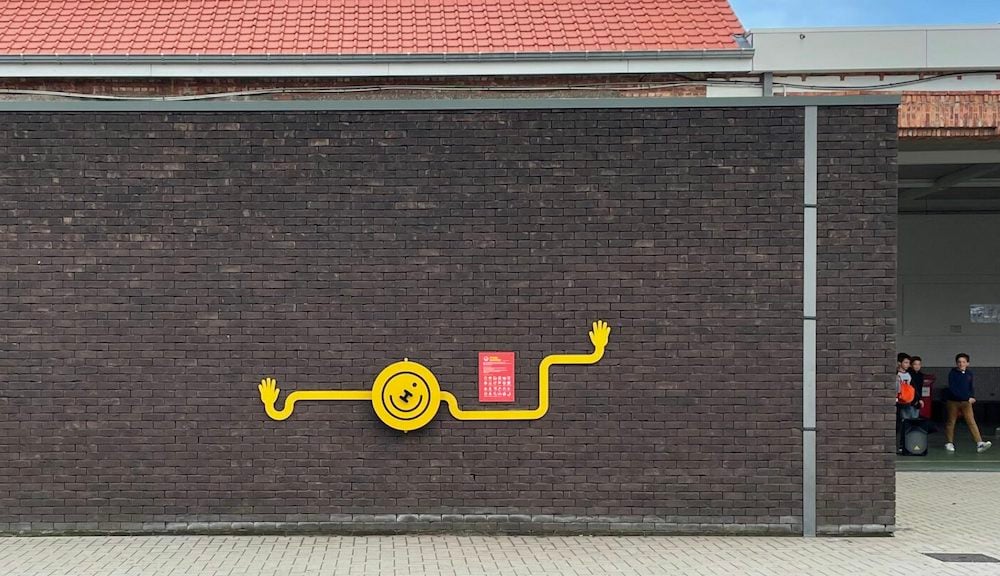In Bornem, a village south of Antwerp, a schoolyard innovation has been installed to prevent playtime exclusion. The HAPPY Speeltijd is a large, wall-mounted wheel that kids spin to decide what to play next. A key feature? Any child who touches the wheel's widely-extended arms is automatically part of the game.
When a HAPPY Speeltijd is installed, the school gets all children to agree on one thing: any child touching the object's arms or high-fiving its hands is included. That basic rule lays the groundwork for inclusive play and removes the barrier of a child having to ask if they can join in. Games are indicated with pictograms that kids of all ages and language backgrounds can understand. Since every region has its variations, a school's pupils pick their own set of games and corresponding pictograms.
Designed by Dentsu, HAPPY Speeltijd builds on a previous playground object the creative agency developed for Mattel's UNO; the new concept takes up less space than the earlier version, making it easier and cheaper for schools to install. HAPPY Speeltijd was revealed last week; it's now being marketed to primary schools in the Benelux.

Trend Bite
Peer interactions allow children to learn social norms and practice prosocial behavior. Rejection is an inevitable part of that process, but if it becomes a pattern, it's associated with long-term adverse effects, including anxiety, loneliness and depression. Beyond emotional ramifications, excluded children are also more prone to behavioral and academic problems. Moreover, people who experienced a lonely childhood are likelier to report feeling lonely or isolated as adults.
Engineered to mitigate childhood loneliness, HAPPY Speeltijd presents a structured mechanism to boost inclusion. The combination of material and social elements is essential. With its wide-open arms underlining the notion that 'all are welcome here,' the physical object presents a fun and visual reminder of a basic rule of inclusive play that pupils are expected to view as a given. What pressing and perhaps overlooked social issue could your brand help creatively solve?
Join 100,000+ future-focused professionals in 180 countries already receiving our free trend updates.
Select your country